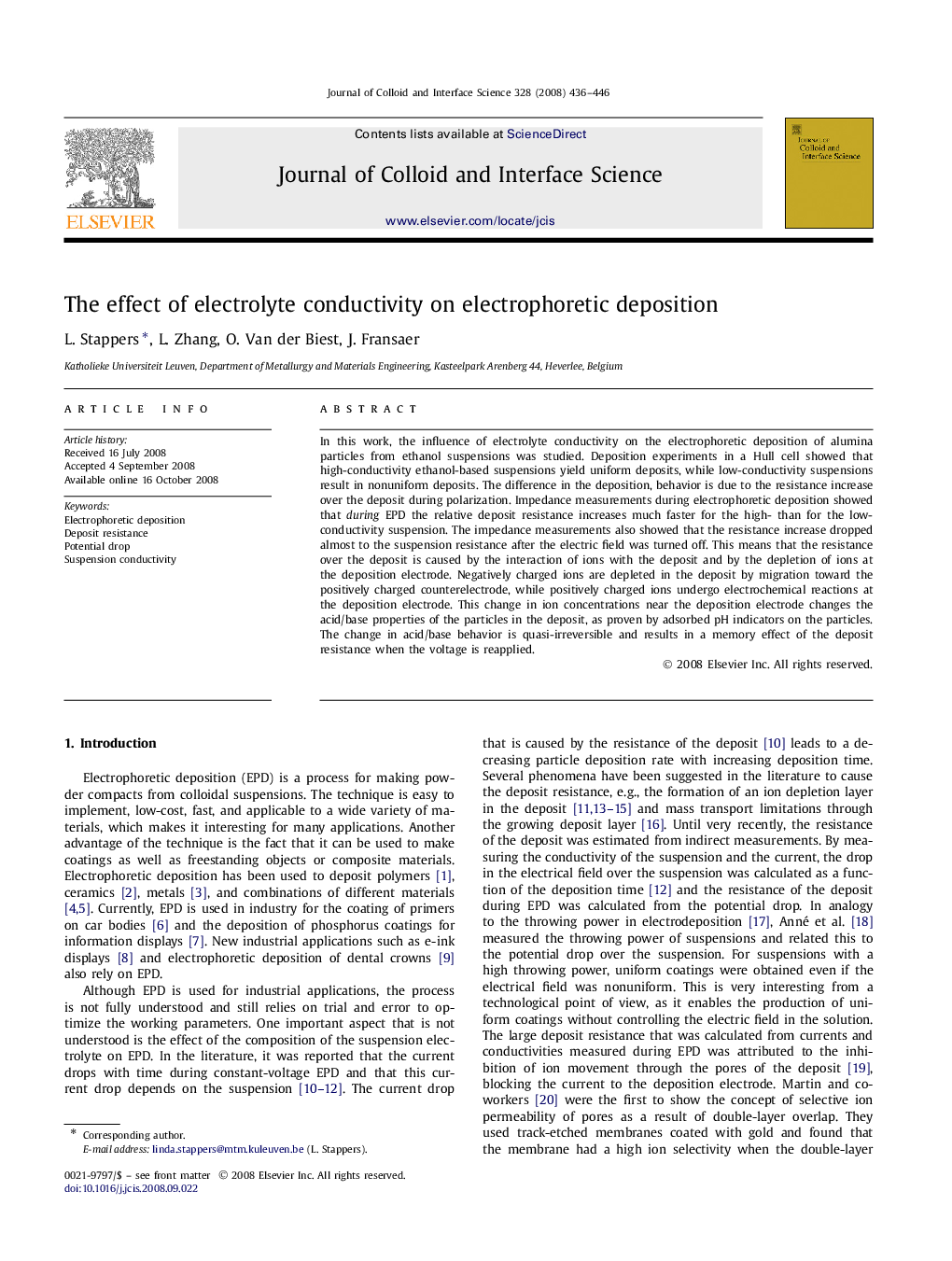| Article ID | Journal | Published Year | Pages | File Type |
|---|---|---|---|---|
| 611029 | Journal of Colloid and Interface Science | 2008 | 11 Pages |
In this work, the influence of electrolyte conductivity on the electrophoretic deposition of alumina particles from ethanol suspensions was studied. Deposition experiments in a Hull cell showed that high-conductivity ethanol-based suspensions yield uniform deposits, while low-conductivity suspensions result in nonuniform deposits. The difference in the deposition, behavior is due to the resistance increase over the deposit during polarization. Impedance measurements during electrophoretic deposition showed that during EPD the relative deposit resistance increases much faster for the high- than for the low-conductivity suspension. The impedance measurements also showed that the resistance increase dropped almost to the suspension resistance after the electric field was turned off. This means that the resistance over the deposit is caused by the interaction of ions with the deposit and by the depletion of ions at the deposition electrode. Negatively charged ions are depleted in the deposit by migration toward the positively charged counterelectrode, while positively charged ions undergo electrochemical reactions at the deposition electrode. This change in ion concentrations near the deposition electrode changes the acid/base properties of the particles in the deposit, as proven by adsorbed pH indicators on the particles. The change in acid/base behavior is quasi-irreversible and results in a memory effect of the deposit resistance when the voltage is reapplied.
Graphical abstractDuring electrophoretic deposition, a potential drop develops over the deposit. This drop is proportional to the suspension conductivity and the applied potential and causes leveling of the deposit thickness.Figure optionsDownload full-size imageDownload as PowerPoint slide
